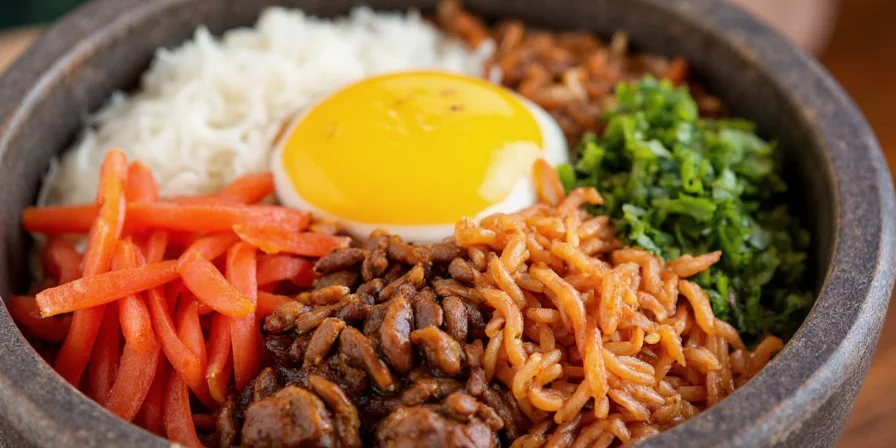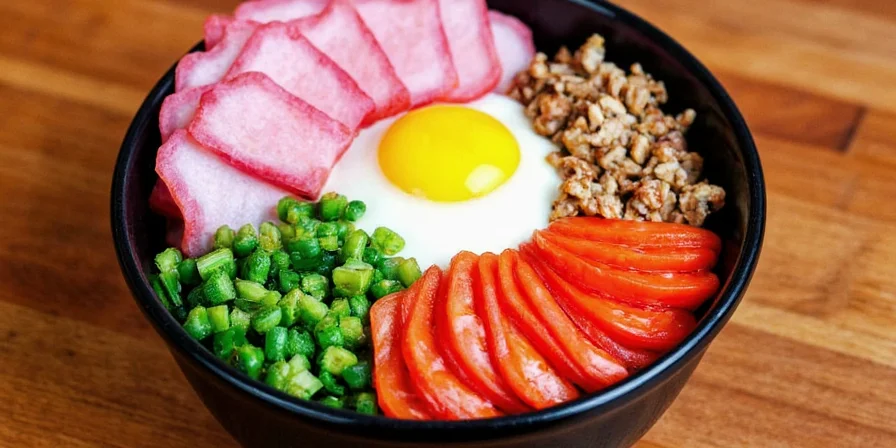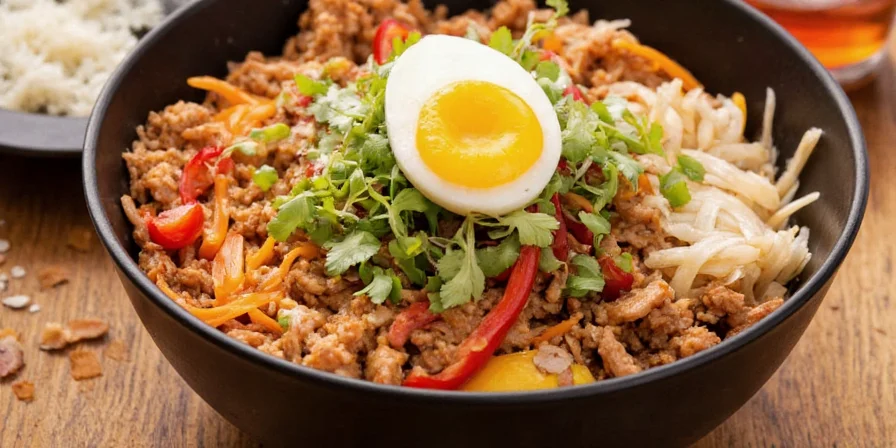Bibimbap Bowl: A Colorful Celebration of Spice and Culture
If you've ever wanted to taste the world through a single dish, the Bibimbap bowl might just be your passport. This iconic Korean meal isn’t just about flavor — it’s a canvas for global spice traditions, a visual feast, and a cultural masterpiece packed into one bowl.
In this article, we’ll explore the roots of bibimbap, how spices from around the world have influenced its evolution, and share practical tips to create your own globally-inspired version at home!
Table of Contents
- A Quick Bite of History: Where Did Bibimbap Come From?
- Spice It Up: How Global Flavors Made Their Way Into Bibimbap
- Top 5 Tips to Build the Ultimate Bibimbap Bowl
- From Seoul to San Francisco: Regional & International Twists on Bibimbap
- Visual Guide: The Art of Layering in Bibimbap
- Conclusion: Why Bibimbap Is More Than Just a Bowl of Rice

A Quick Bite of History: Where Did Bibimbap Come From?
The word “bibimbap” translates to “mixed rice,” and while that sounds simple enough, the story behind it is anything but. Traditionally served in a hot stone bowl (dolsot), this dish was originally a humble farmer's meal meant to use up leftover ingredients — making it both sustainable and economical.
Its origins trace back centuries in Korea, often linked to rural communities where families would gather during harvest festivals or Chuseok (Korean Thanksgiving). Over time, it became more than a folk dish — it evolved into a national favorite and a global ambassador of Korean cuisine.

Spice It Up: How Global Flavors Made Their Way Into Bibimbap
While traditional bibimbap uses gochujang (Korean chili paste) as the primary spice, modern versions are embracing flavors from all corners of the globe. Here's a breakdown of how different cultures have contributed to the spicy soul of the bibimbap bowl:
| Region | Spice/Ingredient | Impact on Bibimbap |
|---|---|---|
| Korea | Gochujang, gochugaru (chili flakes) | Classic base of umami and heat; signature Korean spice profile |
| Mexico | Chipotle, lime, jalapeños | Adds smoky heat and zesty brightness |
| India | Cumin, turmeric, curry powder | Introduces earthy warmth and golden color |
| Thailand | Sriracha, lemongrass, Thai basil | Brings tangy, aromatic spiciness |
| Middle East | Za’atar, sumac, harissa | Offers citrusy zest and bold spice notes |
Practical Tip:
- Experiment with spice blends by mixing a pinch of cumin or smoked paprika into your gochujang sauce for a fusion twist.
- Try using harissa aioli instead of plain sesame oil for a North African flair.

Top 5 Tips to Build the Ultimate Bibimbap Bowl
- Pick Your Protein: Classic options include bulgogi (marinated beef), fried egg, tofu, or chicken. For a vegan twist, try marinated mushrooms or tempeh.
- Load It With Veggies: Aim for 6–8 colorful toppings like spinach, bean sprouts, zucchini, carrots, shiitake mushrooms, and kimchi.
- Balance the Heat: Don’t overwhelm the palate! Gochujang is rich and salty — balance it with something creamy like a soft-boiled egg or avocado.
- Rice Matters: Use short-grain brown or white rice for authenticity. Cook it slightly sticky so it holds onto those delicious sauces.
- Layer Smartly: Start with warm rice at the bottom, then add veggies, protein, and finally the sauce. Stirring before eating ensures every bite is perfect.

From Seoul to San Francisco: Regional & International Twists on Bibimbap
As bibimbap has traveled the globe, chefs and home cooks alike have reinterpreted it to match local tastes and available ingredients. Here are some fun spins on this classic:
- Texas Style: Smoked brisket, pickled jalapeños, and chipotle mayo over brown rice.
- Mediterranean Inspired: Grilled halloumi, roasted red peppers, kalamata olives, and tzatziki drizzle.
- Jamaican Jerk: Jerk-seasoned chicken, mango salsa, coconut rice, and Scotch bonnet aioli.
- Peruvian Fusion: Lomo saltado stir-fry, aji amarillo sauce, quinoa base, and avocado slices.
- Japanese Kaiseki: Sashimi-grade tuna, edamame, miso-glazed eggplant, and yuzu-kombu dressing.

Visual Guide: The Art of Layering in Bibimbap
A bibimbap bowl is not only a treat for your taste buds but also for your eyes. Its beauty lies in its presentation — each ingredient is carefully placed in sections around the bowl to form a rainbow of textures and colors.
Here’s how to do it right:
- Use a wide, shallow bowl to spread everything out evenly.
- Start with steamed rice as the base.
- Arrange vegetable toppings in separate sections around the rim.
- Place the main protein in the center.
- Drizzle sauces in a spiral pattern for an Instagram-worthy finish.
Pro Photographer Tip:
- For the best photos, light the bowl from above to highlight the colors.
- Serve it with chopsticks sticking upright — it adds height and symmetry to the shot.
Conclusion: Why Bibimbap Is More Than Just a Bowl of Rice
The bibimbap bowl is far more than a trendy dish — it's a living testament to the power of food to unite people, celebrate heritage, and innovate through global spice traditions. Whether you're savoring a traditional Korean version or experimenting with flavors from Mexico, India, or beyond, each bite tells a story of culture, creativity, and connection.
So next time you're planning a meal, think outside the bowl — or better yet, bring the world into your bowl. After all, when it comes to bibimbap, there’s no wrong way to mix it up… just delicious ones.











 浙公网安备
33010002000092号
浙公网安备
33010002000092号 浙B2-20120091-4
浙B2-20120091-4